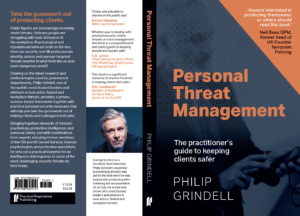Behavioural threat management plays a critical role in creating a safer environment by addressing concerning behaviours proactively. Simplifying this approach and promoting empathy are key to fostering a culture of safety and well-being in today’s challenging work environments.
Behavioural threat assessment and management, a burgeoning field within security and investigations is gaining traction in the UK. It aims to evaluate potential risks of violence from individuals or groups towards specific targets. The key is to identify, assess, and manage threats before they escalate into violent incidents.
Three core components drive threat assessment: identifying concerning behaviours or communications, evaluating these behaviours, and developing a comprehensive management plan to mitigate risks. This proactive approach is crucial in various settings like schools, workplaces, public events, and law enforcement agencies to prevent targeted violence and ensure safety.
One critical aspect often overlooked is how threat assessment enhances performance. Simplifying the process is key; specialists in behavioural threat management (BTM) must prioritise clarity over complexity to be truly effective. By encouraging proactive reporting of concerns and fostering empathy, the identification of concerning behaviours becomes more straightforward.
In a recent study, 29% of UK employees have experienced workplace bullying and harassment, with two-thirds of women reporting incidents of sexual harassment. This toxic culture not only impacts mental health but also leads to increased absenteeism, reduced efficiency, and staff turnover, incurring additional recruitment costs. Promoting empathy and addressing concerning behaviours are vital steps toward a safer and more productive work environment.
The first stage on a threat assessment is the identification of behaviours of concern. One of the challenges is that the workplace has changed.
Increasingly, we are relying on technology, we have hybrid working, we eat our lunch at our desks, and we communicate less. Rather than chatting and sharing small talk, we are focused on our mobile phones and stimulated by online news and gossip. What we do less of is notice and discuss the changes in behaviours in our colleagues.
People’s behaviours change for a number of reasons, which may be because they are unhappy, being bullied, angry at being overlooked for promotion. They may be unrelated to the workplace and can include a relationship breakdown, a childcare or financial issues.
When we then overlay this to the three main sources of work-related violence and toxic behaviour from a) current or former employees, b) hostile customers and clients and c) domestic and familial issues, we can see the interaction with everyday problems that life presents.

Unresolved grievances can escalate and become the root cause of harm caused in the workplace and can be identified by behavioural changes, and yet how often do we ask a colleague how they are when we notice changes in their behaviour?
Once upon a time, workplaces were a type of community, where we shared our troubles, and our colleagues were also our closest friends who we socialised with. I am told by other professionals that they don’t feel they are allowed to raise their concerns about colleagues’ changes in behaviour for fear of falling foul of employment legislation.
Whilst I understand this concern, if we want our colleagues to perform at their best, we want them to be happy, productive and free from concerns at work, in short, we have to care about them. Only by engaging better will we observe behaviours of concern and identify colleagues who are struggling or one that may be escalating towards causing harm or becoming an insider threat.

Behavioural threat management doesn’t have to be seen as a mystical practice with deep psychological analysis privy to secret government departments. At its core, it is the encouragement of greater human engagement to recognise, understand and prevent violent and harmful acts.
In conclusion, by getting to know your colleagues and showing empathy and by caring about them, recognising any changes in behaviour and as Ted Lasso famously said, being curious not judgemental, you can be a brilliant threat assessor.


